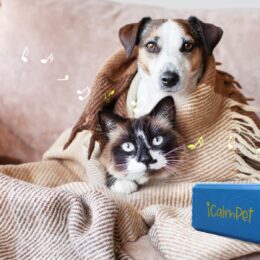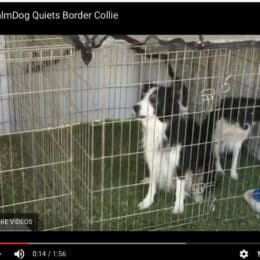Your cart is empty

I started reading the book, Through a Dog’s Ear, soon after starting to work at iCalmPet. Even though the book was published in 2008, I found there was just too much fascinating and relevant information to keep locked up on the shelves! So in collaboration with the author and our co-founder, Joshua Leeds, I’m going to use this space to discuss some of the most interesting and useful parts of the book. According to Joshua, the research and theory explored in this book form the theoretical foundations of iCalmPet, and the basis of all the auditory pet products we bring to the world.
Dogs are infinitely adaptable to our human lives––its why we have them for pets and not cheetahs––they’ve been hard-wired by eons of co-evolution to attune to the rhythms of our lives. But now, more than ever, they have to work so hard to find their place within our hectic modern human environment.
But what happens when they can’t adapt? When you’re flying around the house late for work, and the kids are fighting, and the kettle is screaming… your dog completely picks up on this energy and looks for the threat and is reaaaally anxious to help!?!
This example is what the sensory environment of your home can present to your pet’s psyche, and plays a huge role in their behavior. Imagine it from their point of view, and how confusing all these signals must be. Now imagine how it feels to your cat or dog, to be in your living space, on an average day. If you’re having trouble with your animal, pay attention and see if their sensory environment might be a stressor. Whether it is the scenario above, or a hundred others, sound and other sense elements have a huge influence on your pet.
“Through a Dog’s Ear is designed to initiate conversation and raise awareness about the impact of the sonic environment upon our canine companions”
Unfortunately for most of us modern humans, we can’t always control the sonic environment of our homes–surrounded by cityscapes, construction, and very close proximity to neighbors. All day, our dogs hear television noises, neighbors talking, phones ringing, alarms beeping; sonic debris from an unbelievable variety of sources––especially for a creature who hears at 20,000 Hz above humans, over twice our capacity––and just don’t make sense to a creature that evolved and developed all its auditory programming for a life in the wilderness.
So knowing that sound is only second to the sense of smell, and understanding that in most instances, we are bombarding our pets with sounds they have no control over and no context for… what do we do? Just like people, animals are tuned differently from one another. One can take anything that comes their way; others hide under the bed and won’t come out for three days.
Does any of this sound familiar? Do you have to deal with the effects of an unsettled animal?
We imagine you’re here because you probably do. And since they can’t communicate with us, we must learn to communicate with them: first by listening and tuning in to their environment.
Like this article? It’s the first in a series of Through a Dog’s Ear discussions. If you’d like to suggest a specific topic or have a thought or comment about this one, feel free below 🙂





